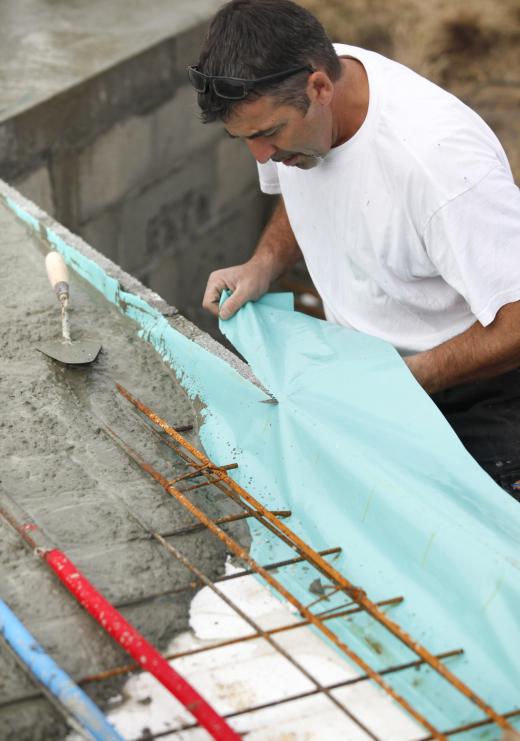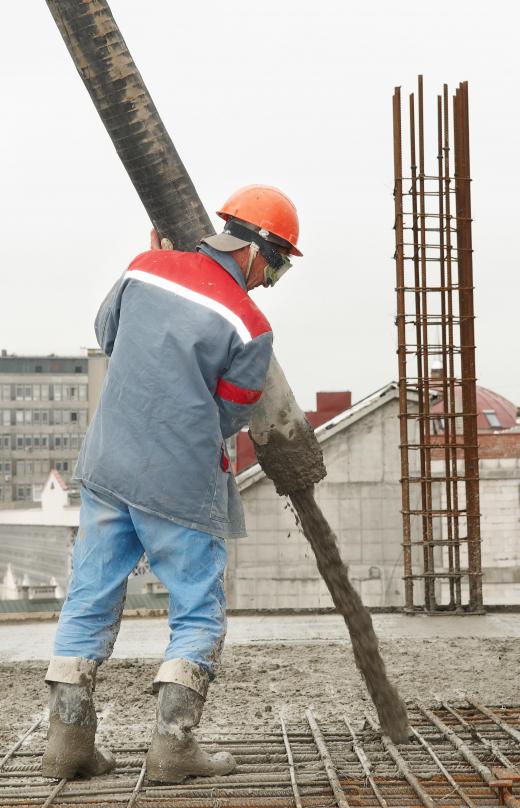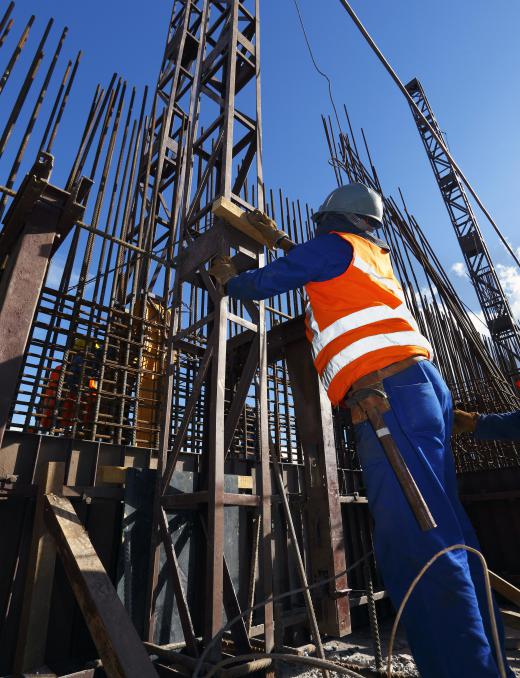A composite beam is a construction element typically consisting of a reinforced concreted slab attached to and supported by profiled steel beams. Composite beams are stronger than the sum of their constituent parts and exhibit a favorable combination of the strength characteristics of both materials. This means a steel and concrete composite beam will posses both the compressive strength of concrete and the tensile strength of steel. There are several other types of composite beams used in the construction industry which combine various grades of concrete with plastic composites and timber. The steel and reinforced concrete composite beam is, however, the most commonly used.
Joining two dissimilar materials to form a composite does not only combine the collective strengths of the two materials. Forming a union between relevant materials actually enhances their physical characteristics and makes the composite stronger than the sum of their strengths. In large scale construction, steel and concrete are most frequently used combinations for composite beams. The concrete lends the composite mass, stiffness, and compressive strength and reduces deflection and vibration in the slab. The steel members give the beam its tensile strength with excellent strength to weight ratios and rapid construction times.

One of the most important parts of a composite beam are the fixing points or shear connectors between the two materials. The correct connection of the two parts of the composite allows the materials to act as a unit and gives the composite beam its inherent strength. These shear connectors are typically studs welded to the steel beams and set into the concrete slab. The number and size of these shear connectors are carefully calculated as they represent a critical part of the composites mechanical performance.

A concrete and steel composite beam may use previously cast concrete slabs or be cast on site. Pre-cast slabs are constructed with slots or pockets in them which accept the fixing studs. These pockets are then filled up with concrete when the slab is correctly positioned. Fabricating slabs on site is a little more complex and requires a profiled deck sheet to be laid prior to pouring the concrete. This deck is typically light gauge sheet steel featuring different profiles depending on the application.

The sheet is laid on top of the beams, and then shear connectors are fixed to the beams using either a “through-deck welding” process or by shot firing. Once the deck is in place, the concrete is poured on top and reinforcing bars added. The deck serves to shutter or contain the wet concrete and also lends strength to the composite once the slab has cured.
Several other composite beam types are used in smaller scale construction. These include timber beams which support lightweight concrete strips used as floor slabs in many timber homes. Concrete filled resin composite boxes are often used in the construction of bridges. They are strong, quick to fabricate, and relatively light weight requiring a minimum of heavy machinery to put in place. Although very different in the materials used, these structural elements all make use of the same principle of shared strengths as the more traditional steel and concrete beams.
What's the Difference Between Composite and Sealed Beam?
As mentioned earlier, structures and buildings contain a wide range of beam types. Composite beams are just one of more than 20 kinds used in modern construction. But maybe you've come across the term "sealed beam" and find it a little confusing. Does a sealed beam have anything to do with construction at all?
As it turns out, sealed beams are not from the construction world. They're a type of automobile headlight design that incorporates a bulb placed behind a lens and sealed in a self-contained unit. These were the old-school type that most cars came equipped with before 1990. You'll mostly find composite beam headlamps on today's vehicles: They are make/model specific, allowing you to replace only the bulb if it burns out. In contrast, you had to replace an entire sealed headlight if it malfunctioned.
Types of Construction Beams
So now that we know that sealed beams have no connection to the construction world, let's do a quick review of the most common kinds of beams. You'll find them classified based on some logical characteristics, including support conditions, construction materials, geometry, cross-section shapes and method of construction.
Beam Materials and Support Conditions
Composite beams fall into the same category as reinforced concrete, steel and timber. Most are made by pairing steel with reinforced concrete, but other styles combine plastic composites and timber with concrete. Other beams classified by construction materials include pure steel, timber and reinforced concrete.
Construction beams are also categorized by how they're supported. Simply supported beams rest on pinned support at one end and roller supports at the other. Thanks to this setup, it's free to rotate. Fixed beams, on the other hand, have supports at both ends but cannot rotate. Cantilever beams are attached to a vertical surface and extend out from it. They're commonly used to create structures like bay windows and balconies. Continuous beams are equipped with more than two supports along the entire length.
Beam Geometry and Cross-Section Shapes
Shape and geometry also play key roles in a beam's function. Those with cross-section shapes are typically fashioned from reinforced concrete, steel or a blend of the two. Typical designs include rectangular, T-shaped, L-shaped, straight, curved or tapered.
Method of Construction
Concrete beams can be fashioned through specific fabrication methods to provide the best possible support. Cast in-situ concrete beams are manufactured right on site, while precast concrete beams are crafted in factories before a construction projection starts. There are also prestressed concrete beams, which contain pre-tensioned metal strands inside each beam to improve its performance.
What Kind of Foams Are Used for Composite Beams?
You've already learned about composite and other types of beams used in building construction. But another type of composite beam is used in high-performance environments: the sandwich beam. This structure is typically used in aerospace, automobiles, marine craft and wind turbine production. Sandwich composite beams have many benefits: strength, fatigue resistance, durability and stiffness.
How Sandwich Beams Are Constructed
Sandwich composite beams usually consist of a low-stiffness, low-density interior core paired with two outer skins and a strong adhesive. The exterior skins often contain carbon fiber or aerospace-grade aluminum, but they can also be fabricated from glass laminates, carbon fiber reinforced thermoplastics or thermoset polymers. Their low-density interiors are comprised of either open- or closed-cell foam. Manufacturers can choose from a selective variety of materials when crafting sandwich composite beams:
- Nomex foam
- Metal honeycomb
- Plastic polymer foams
Nomex Foams
Nomex is a durable heat- and flame-resistant meta-aramid polymer first created by DuPont in the early 1960s. Nomex boasts a tensile strength of 340 megapascals, roughly equivalent to 49,300 psi. It can also handle temperatures up to almost 700 degrees Fahrenheit.
Polymer Foams
Plastic polymer foams are also popular choices for sandwich composite beams' cores. Polyurethane, polyvinyl chloride, polyethylene and polystyrene are the most commonly used. Like Nomex, they create a low-density interior.
Benefits of Sandwich Composite Beams
Sandwich composite beams provide some important advantages from an engineering standpoint. By pairing stiff exterior skins with low-density interior cores, these beams deliver superior strength while reducing overall weight. This design results in high bending strength and stiffness relative to the beams' weight. Depending on the specific materials inside each beam, they can also offer thermal insulation properties plus corrosion resistance and stability. They also offer superior crashworthiness, the ability to absorb impact energy during collisions.
